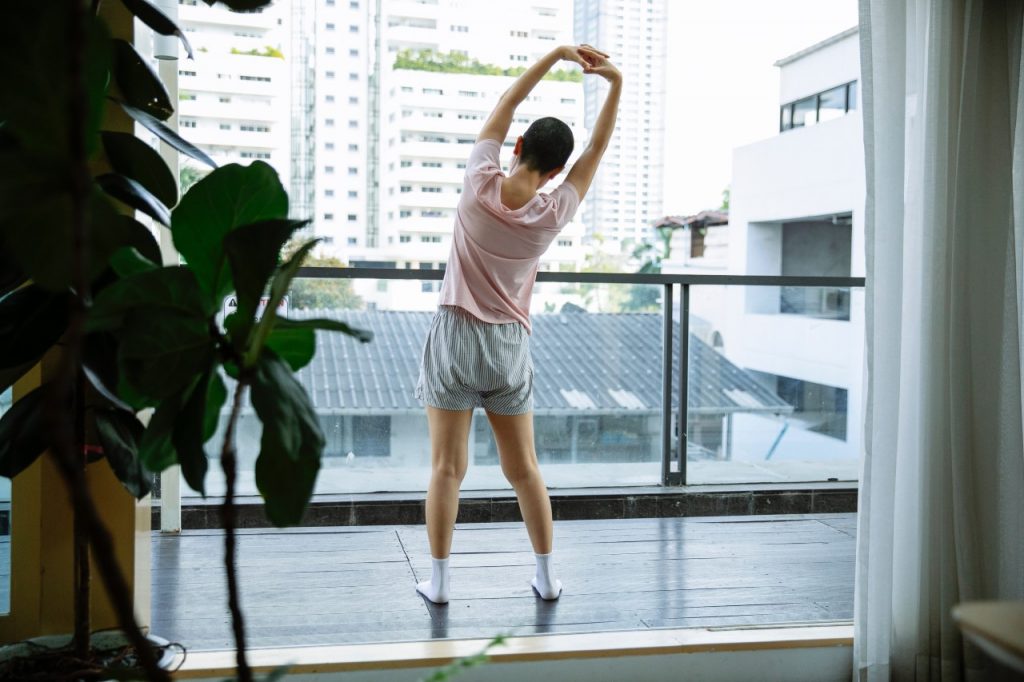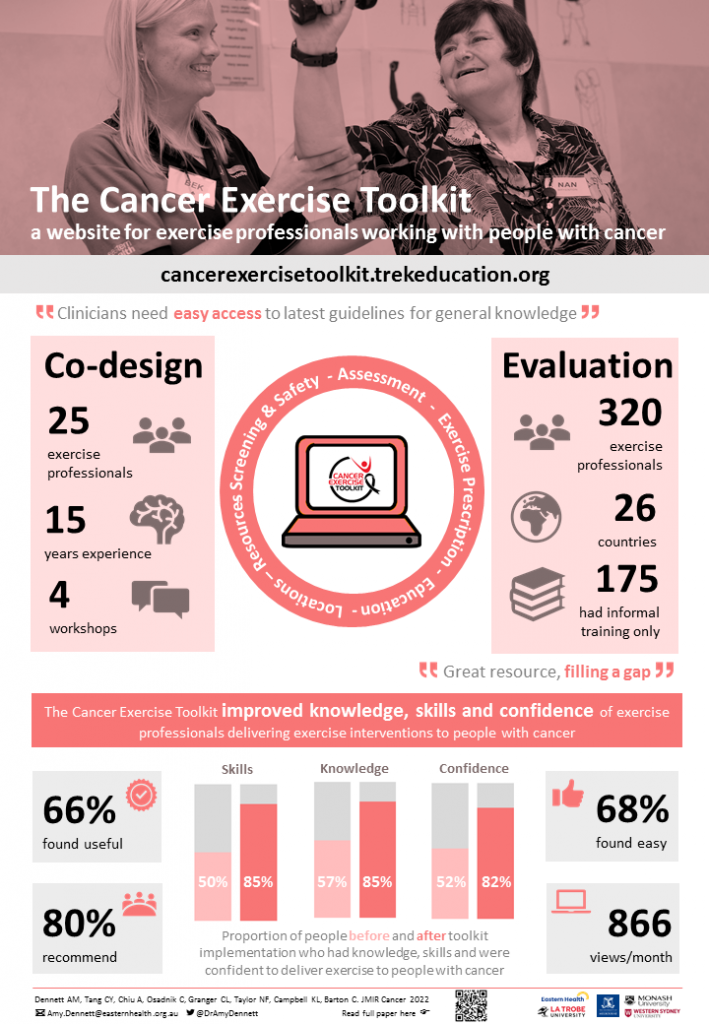Unsure where to start when prescribing exercise for people with cancer?
Check out the Cancer Exercise Toolkit
Exercise is a powerful treatment for people with cancer. It is associated with a reduction in cancer related death by almost 40%,1 and may reduce the risk of cancer recurrence by up to 35%.2 Exercise is the number one treatment for the most common and debilitating side effects – cancer-related fatigue.3 It also helps treat other cancer and treatment-related effects including depression and lymphedema and is essential to regain fitness and strength.4 Exercise during toxic cancer treatments may also improve the effectiveness and completion rates of chemotherapy.5
Despite the benefits of exercise, most of the more than 1 million cancer survivors in Australia6 will not have access to critical exercise therapy programs.7
Skilled exercise professionals including physiotherapists and exercise physiologists are needed to implement exercise therapy programs for people with cancer. However, many physiotherapists lack confidence to deliver exercise interventions to people with cancer.8 High quality professional development opportunities are needed to assist exercise professionals to improve their knowledge, confidence and skills in cancer care to enable improved access to cancer-specific exercise therapy programs.
We developed the Cancer Exercise Toolkit,9 a website co-designed by exercise professionals across Australia. This website and its resources were created through a series of workshops including expert and generalist exercise professionals in 2020. Exercise professionals provided their perspective about their learning needs, content, format and usability of the website.
The Cancer Exercise Toolkit includes:
- Evidence overviews about exercise and cancer, alongside links to key publications and links to other resources such as podcasts
- Practical advice and resources on how to setup and deliver exercise therapy programs
- Guidance on how to safely prescribe exercise to people with cancer
- Case studies of the patient experience
- Patient resources including links to videos about why exercise after cancer diagnosis is important, along with ‘how to’ exercise instructional videos
- A map of locations offering cancer-specific exercise therapy programs in Australia
The Cancer Exercise Toolkit was launched in the first half of 2021, being initially accessed by over 400 clinicians in 26 different countries. Most agreed they would recommend it to colleagues, and 3-months after the toolkit’s launch, exercise implementation behaviours were rated higher than baseline. Exercise professionals using the toolkit described better knowledge, confidence and skills to provide exercise interventions to people with cancer in accordance with guidelines.
The Cancer Exercise Toolkit can help exercise professionals working with people with cancer to grow their capacity to implement exercise therapy programs as part of their routine practice. We hope this toolkit can help bridge the evidence-practice gap to enable more people with cancer to experience the wide-reaching effects of exercise and ultimately improve the quality of life of millions of people in the future. Check out the Cancer Exercise Toolkit here. Read the Full text on how we created the toolkit here
Author:
Amy M Dennett, PhD, School of Allied Health, Human Services and Sport, La Trobe Sport and Exercise Medicine Research Centre, La Trobe University and Allied Health Clinical Research Office, Eastern Health, Victoria, Australia amy.dennett@easternhealth.org.au
Competing interests:
None
References:
- Friedenreich CM, Stone CR, Cheung WY, Hayes SC. Physical Activity and Mortality in Cancer Survivors: A Systematic Review and Meta-Analysis. JNCI Cancer Spectr. 2020;4(1):pkz080.
- Cormie P, Zopf EM, Zhang X, Schmitz KH. The Impact of Exercise on Cancer Mortality, Recurrence, and Treatment-Related Adverse Effects. Epidemiol Rev. 2017;39(1):71-92.
- Mustian KM, Alfano CM, Heckler C, et al. Comparison of Pharmaceutical, Psychological, and Exercise Treatments for Cancer-Related Fatigue: A Meta-analysis. JAMA Oncol. 2017;3(7):961-968.
- Campbell KL, Winters-Stone KM, Wiskemann J, et al. Exercise Guidelines for Cancer Survivors: Consensus Statement from International Multidisciplinary Roundtable. Med Sci Sports Exerc. 2019;51(11):2375-2390.
- Bland KA, Zadravec K, Landry T, Weller S, Meyers L, Campbell KL. Impact of exercise on chemotherapy completion rate: A systematic review of the evidence and recommendations for future exercise oncology research. Crit Rev Oncol Hematol. 2019;136:79-85.
- Welfare AIoHa. 2021; https://www.aihw.gov.au/reports/cancer/cancer-in-australia-2021/summary
- Dennett AM, Peiris CL, Shields N, Morgan D, Taylor NF. Exercise therapy in oncology rehabilitation in Australia: A mixed-methods study. Asia Pac J Clin Oncol. 2017;13(5):e515-e527.
- Dennett AM, Rowe A, Mortimer J, Gordon C, Glagovski S, Osadnik CR. Perceptions and work-readiness of Australian physiotherapists in cancer care: a national evaluation. Physiotherapy. 2021;113:1-7.
- Cancer Exercise Toolkit. 2021; https://cancerexercisetoolkit.trekeducation.org. Accessed 20th October, 2021.


